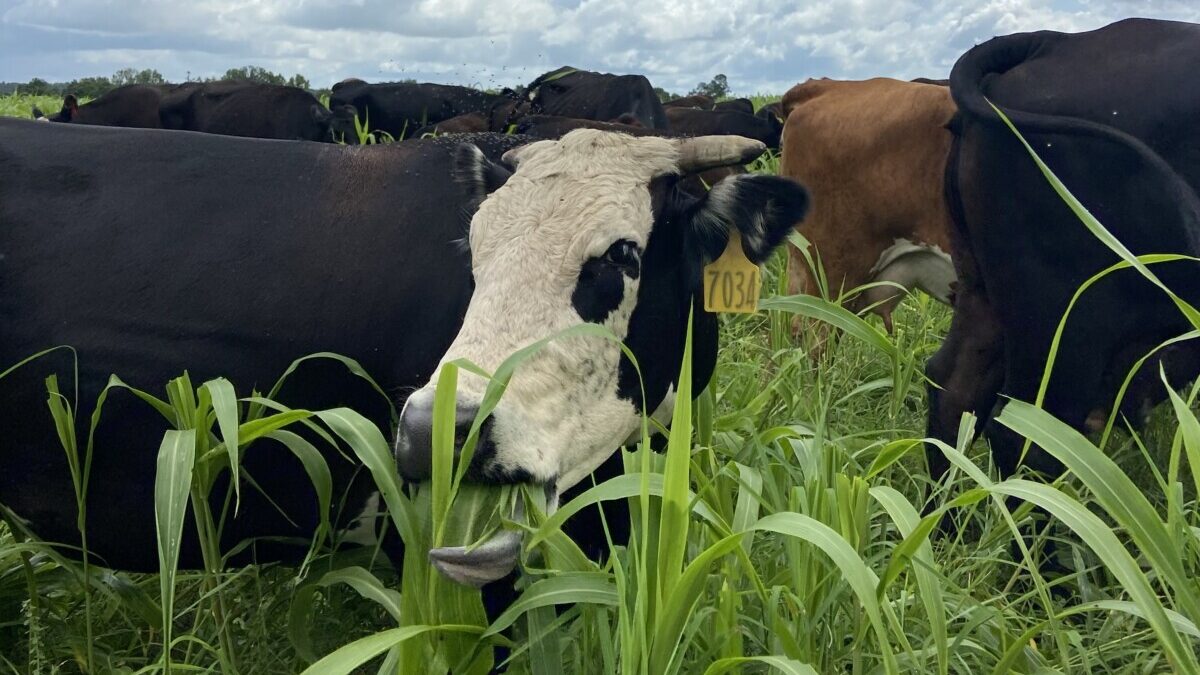Grazing Management
-

Lisa Baxter and Taylor Singleton Annual forages are an excellent tool for bridging the production gaps left by perennial forages systems. In this article you will find an overview of planting guidelines, planting methods, grazing and past management recommendations for summer annuals. (Photo: Shauni Nichols)
Posted in: Forages -

Jennifer Tucker, Ph.D. Explore options to optimize winter forage systems, reduce reliance on stored feed, and boost herd performance with practical winter grazing strategies. Click the link below to access the article.
-

William Secor, Ph.D. It feels like some kind of weather event has been affecting Georgia beef cattle markets every few months this year. This article provides some basic concepts about Pasture, Rangeland, and Forage insurance for beef cattle producers.
-

Lisa Baxter, Ph.D. As the weather in the state gradually starts to change, it is important to have a game plan when it comes to forage management this fall. Click below to access Dr. Lisa Baxter’s article that includes a fall forage management checklist.
-

Lisa Baxter, Ph.D. Most tall fescue stands found in Georgia have a fungus that lives in the plant and can be transmitted in the seed. This endophyte has some benefits including pest resistance, drought tolerance, and persistence under grazing. However, the wild- or native-type endophyte (E+) produces toxins called ergot-alkaloids that can cause cattle to…
-

Jennifer Tucker, Ph.D. Attend any forage focused Extension program and you will assuredly discuss the importance of soil fertility, forage quality, having a forage plan, and utilizing proper seeding and planting practices. Each of these are key fundamentals to efficient and effective forage management and utilization and should not be overlooked in this article. A…
-

Jason Duggin – Fescue can serve as a main forage supply, but there are some things that need to be considered to mitigate the toxic endophytes. In this article, Jason Duggin will discuss some of the important considerations for beef cattle producers grazing Fescue in the Southeast.
Posted in: Beef Cattle Market, Forages, Grazing Management, Health, Management, Nutrition, Weaning Management -

Martin Wunderly, Raymond Fitzpatrick, Robyn Stewart, Shanna Reynolds, and Pedro Fontes – Good quality water is essential for adequate animal performance and cattle need between 8 to 20 gallons of water per day, depending on size, diet, status, and weather. As we get into the warmest months of the year, having an adequate water supply for…
-

Dr. Lisa Baxter, Assistant Professor and UGA Forage Extension Specialist Since it was first discovered in South Georgia in the summer of 2010, the bermudagrass stem maggot has severely damaged bermudagrass pastures and hayfields throughout the Southeast US. In this article, Dr. Lisa Baxter discusses how to find and control for bermudagrass stem maggot.
-

Dylan Davis and Dr. Lawton Stewart – Late summer and early fall have been exceptionally dry. The USDA Drought Monitor indicated that 100% of the state of Georgia was experiencing some level of drought at the beginning of October. This is double trouble for producers because many have missed at least one or two cuttings…
-

(Dr. Jennifer J. Tucker, Associate Professor, Animal and Dairy Science, UGA-Tifton) Bermudagrass is a dominant perennial warm-season grass that accounts for more than 20 million acres of pastures and hayfields across the Southern U.S. While this high yielding forage serves as an excellent perennial base for many ruminant diets in Georgia it does have it’s…
